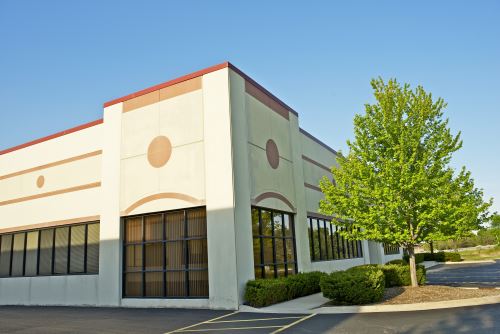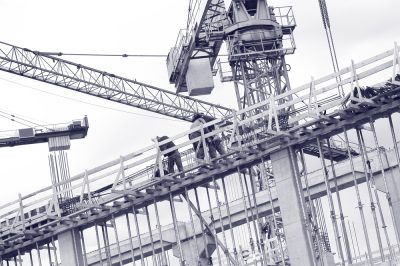The EB-5 Investor visa Program requires an individual to invest Capital of $1.05 million in regular areas or $800,000 in Special economic zones of the United States. To be able to apply for this petition, it is important to make the US green card investment directly or indirectly in a New Commercial enterprise. Thus, it is also important to identify the right Opportunity as the investment required by the Investor Visa program is sizable, so it is important that the investors understand all components of the process. Choosing the right project for making the investment is very important if the investor wants to be successful.
Table of Contents
What is an EB-5 visa project?
EB-5 projects are most often sponsored by the regional centers. Even though EB-5 investors can form their own New Commercial Enterprises, approximately 95 percent of all the EB-5 visa applicants invest through a Regional Center. EB-5 investments must be made in an EB-5 project that is considered to be a new commercial enterprise and that will lead to the creation of 10 full time jobs for U.S. workers.
New commercial enterprises are defined as lawful and “for profit” businesses that were created on or after November 29, 1990. Older enterprises may qualify if the EB-5 investment leads to significant restructuring of the business or increase in the number of employees or net worth of an existing business by 40 percent. The enterprises can be structured in any number of ways, such as a sole proprietorship, limited or general partnership, corporation, business trust, or as other publicly or privately owned business structures. These EB-5 investments could be – Mixed use facility, Hotels, Sports complex, F&B, Agricultural developments, Wineries and farms, Electric vehicles, Manufacturing, Biotech and medical technologies, Entertainment venues, Convention centers, Office buildings etc.
How to choose an EB-5 project?
Choosing an EB-5 project is one of the most crucial parts of your EB 5 for green card petition and quite challenging too. The applicant needs to be very careful while choosing the project as the EB-5 petition depends on the project meeting USCIS requirements and going as per the predictions. A lot of due diligence needs to be put in when undergoing the process of choosing the project. EB-5 Due Diligence is the process of evaluating an EB5 Visa Project before making an investment. Investors are able to choose the most suitable EB-5 Project for their immigration and investment objectives by conducting EB-5 Due Diligence.
In selecting a EB-5 Visa Regional Center project, there are various factors that an investor should take into account:
The investor should seriously consider taking advice from a financial or investment advisor because they are putting at least $800,000 at risk and perhaps if the investors is taking the $1.05 million route then they’re putting $1.05 million at risk for the next 5-6 years. While the investor certainly needs an immigration lawyer to help them on the legal and immigration side at the same time they should take help from a financial person or a licensed investment banker (that have a duty of due diligence as to an EB-5 project or any other financial products) to help the investor make the investment decision because there’s a lot of things that they can look at in terms of financial due-diligence, immigration due-diligence, and regulatory due-diligence to help the investors make a fully-informed decision.
Also, when making EB-5 Visa Regional Center Investments an investor should consider the Regional Center team and track record For example, if it’s a long-established Regional Center, then, how many projects have they done, How much I-526 approvals have they had, how many I-829 approvals have they had, how many projects that they’ve actually overseen has actually returned capital back to the investors?
The factors above aren’t the only ones an investor should look at in terms of deciding which Regional Center Investment they’re going to put their $800,000 investment into but it’s one of the factors because at the end of the day it’s really not the Regional Center that’s returning the investors money, it’s the developer, who is borrowing the $800,000 along with funds from other investors that is going to be signing that loan agreement and stating they will return the loaned funds to the EB-5 Investors in 5-6 years. While an EB-5 investor should look at the Regional Center track record but at the same time it’s really the developer or the borrower that one should be looking at and seeing whether they have the capacity to return that capital and how they’re going to go about returning that capital when it comes due and what kinds of projects has that developer run in the past, what kind of success rates have they had in the past, have they done other projects through the EB-5 program before or not.
Also, because the investor is typically a lender into that project, what is the EB-5 investors’ position in relation to other lenders into that project?
For example, in a $100M project, perhaps $20 million came from the developer themselves and perhaps there’s a $50 million construction loan from a bank and the rest of the $30 million was raised through 60 EB-5 investors. The bank might have first position in that loan meaning if something were to go wrong in that project, the bank would have the first right to foreclose into that project, of course, depending on the terms of the loan but they would be the ones who would be in a position to perhaps get some of their money back if there’s enough collateral there. And if EB-5 investors are in the second position, unless there’s something left over, they’re not going to get anything back. So, that’s another thing that EB-5 investors should be looking at; and of course, the financial viability of the project, do a fair bit of financial analysis, or have your financial professional share with you the types of financial investments that they’ve done and what kind of risks have they come across.
The next is regulatory compliance, in the U.S., there’s two agencies that oversee a lot of capital raising, one is the Securities and Exchange Commission (SEC) and one is FINRA – Financial Industry Regulatory Authority. More and more, these two agencies are taking a very close look at the EB-5 program, and there’s quite a few Regional Centers in the country, now that are embracing the fact that the SEC and FINRA are asking them to be compliant with securities laws of the U.S. and hence, they are engaging securities broker-dealers in the U.S. to help them raise this kind of capital. And of course there are Regional Centers in the country that don’t think that they need to comply with SEC and FINRA because they are what you call exempt securities. An investor is risking $800,000 for the next 5-6 years, thus, they should make sure that the developer and/or the borrower, or the Regional Center is in full compliance of all U.S. laws and not really operating in the grey areas of the law.
Another factor that an investor applicant should be looking at is the Regional Center’s relationship with the developer or the borrower. More and more developers are looking to rush into becoming a Regional Center themselves. There is actually an inherent conflict with that model, there are good developers and there are not so good developers in the market so, some investors are comfortable with that conflict, some are not, but that is another factor that you should be looking at.
Last for definitely not the least, an investor should closely study the Job Creation model for the project. At the end of the day, the reason that investors are making that investment is so that they can get their temporary Green Card and eventually get their permanent Green Card. That’s completely contingent upon the project creating the required number of jobs. So validation of that model is definitely necessary. There are what are called pre-approved projects in the market and these are projects where the developer, or the borrower, or the Regional Center have submitted the documents, the business plan, and the economist report to the USCIS even before the investors have filed their I-526 on that project and the USCIS has approved those projects and in approving those projects, agreed that the business plan/Economics make sense from a job creation perspective. By pre-approving projects, the US government is not endorsing the projects or anything like that, they are just saying, if all this investment were to happen in this particular geographic area, and a particular amount of money were to be spend this amount of money in certain activities, they think, the required number of EB-5 jobs will be created. The best EB5 Projects are those that help EB-5 Visa applicants meet the minimum jobs required that are sustained until their application for Lawful Permanent Residence. Learn more about examples of the Best EB5 Projects for immigrant investors.
Learn more on How to Choose an EB5 Project.
There are two different options that are available to prospective EB-5 applicants.
- Direct EB-5 Investment or investing into a business;
- EB-5 Regional Center Investment or investing in a ‘project’

Direct Investments
A Direct EB-5 Investment is an investment into a new business and creation of 10 full-time jobs. An investor is directly investing into an actual, real, operating business.
The investment amount could either be $1.05 million or $800,000. If the business is located in a Targeted employment area (TEA), then the investment amount is lowered to $800,000 otherwise it’s $1.05M. A targeted employment area is an area where the unemployment rate is 150% of the national average, or it could also be a rural area. A rural area is a region outside a metropolitan statistical area (MSA) and cannot have a population of more than 20,000 or be on the border of a municipality with more than 20,000 residents. Investors in a Rural EB5 Project are allotted 20% EB-5 Visa set-asides out of the total annual allotment of 10,000 EB 5 Visas.
Most Direct EB-5 investments are investments such as franchise Business, restaurants, an IT Company, a chain of retail stores etc., but, regardless of the type of Direct EB-5 investment, the investor has to create those 10 full-time jobs.

So, as a practical matter, if an investor wants to open up a new gas station, he or she must think about whether that one gas station can actually create, sustain and maintain 10 full-time jobs or not. Most gas stations tend to create maybe 3-5 full-time jobs. However, if the investor opens multiple new locations then perhaps the investment can actually create those 10 jobs across multiple locations and that may qualify for a USA investor visa.
Similarly for restaurants, if one new restaurant cannot maintain or sustain 10 full-time jobs, then perhaps if there are multiple new locations, and the business generates 10 jobs at a minimum, then that may qualify as an EB-5 Direct Investment. The investor cannot just Buy Real Estate to qualify for United States citizenship by investment.
Regional center investment
Generally, a Regional Center is a private company that acts as a fund manager or sponsor of an EB-5 project (although there are a handful of State-owned and Government operated regional centers).
The EB-5 Regional Center is supposed to be an Investment management company involved in the promotion of economic growth, job creation, and capital investment into the U.S. economy and is involved in raising capital for EB-5 development projects.
To become a Regional Center, the business entity must have applied with the USCIS for Regional Center approval.

Regional Centers in the US
It has to show the following things: how that particular Regional Center plans to focus on a particular geographical region within the United States and how are they going to go about using the Finance for promoting the economic growth in that region; and how, in verifiable details, meaning through business plans and economic reports and job creation models showing how a particular type of project in a particular area will create and stimulate the local Economy and create jobs. These projects could be residential, commercial, mixed use businesses, Health care facilities etc. Most of the projects are Real Estate projects since construction creates the most number of jobs. Green card through investment relies much on job creation and such projects are capable of meeting the mark since the indirect jobs are also counted in an EB-5 Regional Center.
At any given day, the Regional Centers in the country will have many active EB5 Projects in the market. No two projects tend to be the same and each project carries its own degree of risk: There are low risk projects, there are medium risk projects, and there are high risk projects. How an investor classifies them into one of the risk categories is through taking into account a lot of factors that go into that particular project. Most Regional Center projects that an investor will come across in the market tend to be low or zero return on investment (ROI). Low or no-return generally means perhaps a 1% return on investment, perhaps %0.5 return. We’ve seen returns of up to 5-6%. However, an investor must remember the rule of thumb that the higher the return, generally the higher the risk may be. So an investor should be careful about that. Also, just because a project has low returns doesn’t mean that it is low-risk. And, hence, an EB-5 visa investor should think about engaging legal, business and financial professionals to help them in making a fully informed decision when it comes to Regional Center Investment.
At-Risk Investment
As mentioned an investor is risking $800,000 for the next 5-6 years if they were to pick a Regional Center Investment that follows the loan model. A lot of time, there’s a lot of confusion about what is an “At-Risk” investment. Simply put, there must be a risk of loss or a chance of gain. An“At-Risk” does not necessarily mean risky, unless you want it to be. There are plenty of projects in the market which, because of one factor, or several factors, may be perceived as high-risk and perhaps to compensate for that, they may be offering a higher Return of Interest, but at the end of the day, it’s a call that the investor needs to make in terms of the amount of risk the investor is willing to take. EB 5 visa requirements state that your investment be “At-Risk.” So, if anyone states that their EB-5 investment is a risk-free investment or a risk-free project, or that a 100% of the risk has been eliminated, they are just misrepresenting the facts. There is no such thing as a no-risk or zero risk investment because EB-5 projects, or EB-5 investments need to be “At-Risk” investments for them to qualify under the US investment visa and to be able to reach United States Permanent residency and Naturalization of Green card.
EB-5 Job Creation
As mentioned earlier, each and every EB-5 applicant is required to create at least 10 full-time jobs for Americans to be able to reach EB-5 visa citizenship. If an investor takes the Direct Investment route, they have an obligation to create and maintain at least 10 full-time jobs until they get your EB5 green card and if an investor makes a Regional Center Investment, then the Regional Center and developer have the burden to create the 10 jobs but the investor still has to show the proof that those jobs were indeed created through their EB-5 visa investment amount $800,000 or $1.05M. In the Regional Center framework, the Regional Centers and developers will provide you with those types of documentation at the time of filing I-829 Removal of Conditions Application.
Every EB-5 applicant is required to create or preserve at least 10 full-time jobs. The preserve piece comes in when an investor does not necessarily invest into a new business, perhaps they invest into an existing business. An existing business may qualify for an EB-5 if it is a troubled business. For example, if an EB-5 investor “rescues” a business that’s in the danger of closing or that’s been in losses for a number of years, and it’s in danger of losing jobs then by investing the Amount qualifying in particular area of economy might be able to qualify the business as an EB-5 investment project.
Thus to be able to reach the Permanent Green Card and then Citizenship of the United States it is important to carefully consider the investment options.
EB5 BRICS is here to help guide you to citizenship through investment. We have helped many families successfully navigate the EB5 immigration landscape. We can answer your questions about EB-5 Visa Wait Time or walk you through EB-5 step by step.
Make an appointment for a one-on-one meeting to Meet Vivek Tandon, Esq a US Lawyer and Investment Banker. Call Us for more information.






